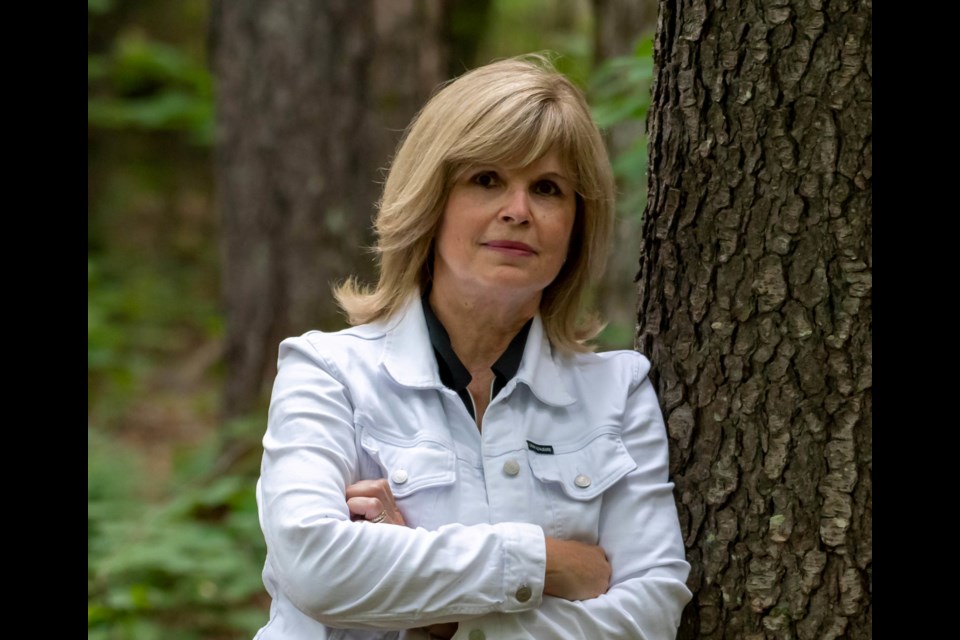Over her 40-year career in forestry, Faye Johnson never wanted, or asked for, any special treatment.
Affirmative Action programs existed in Canada, starting in the early 1980s, but Johnson wanted no part of it. She was determined to demonstrate she could compete for a job on an equal footing against anyone.
A registered professional forester, Johnson started on the bottom rung of the industry ladder as a tree planter and climbed her way into senior director roles in the Ontario government and the private sector, overseeing forest and silviculture operations, involved in policy development, business planning, international trade, Indigenous relations, and economic development.
She runs a North Bay consulting firm and is the respected chair of the Temagami Forest Management Corp., a new provincial agency overseeing management of the 600,000-hectare Temagami Forest in northeastern Ontario.
Growing up in Toronto, Johnson always had an affinity for the outdoors. Her path led her north to Lakehead University in Thunder Bay and its forestry program, graduating in 1982.
At that time, “people were a dime a dozen” in the industry. The only entry-level forestry jobs available were in tree planting.
“Every forester should start with tree planting,” Johnson said. “It teaches you about your grit and tenacity.”
Those traits would stand her in good stead.
Today, Johnson is considered an industry pioneer for women and willing mentor to those coming up through the ranks.
But back in the '80s, she joined an industry with an embedded culture that wasn’t especially welcoming.
“We came from a culture where women were not seen as tradespeople. There were a lot of biases that would suggest men should get the job over women.”
Johnson heard more than her share of insensitive remarks and embarrassingly crude jokes.
“I remember being asked, 'What do you think about taking a job away from a man?' Or men telling me I should be at home with my kids, not working.”
Decades ago, the industry was very much a male-oriented workplace with a ‘get 'er done’ mentality. Devotion to the job was priority, almost at the exclusion of everything else, including family life.
Luckily, Johnson could always confide in her sister, Riet Verheggen, who was also a forester. They would shares stories and inspire each other to keep going.
Want to read more stories about business in the North? Subscribe to our newsletter.
With the support of her husband, Greg, Johnson raised four children and in an insightful blog post on the Women in Wood website, she offered some collected wisdom of the so-called work-life balance. When you're a women executive, it's pretty much non-existent.
There's inescapable overlap between your personal and professional lives, there are sacrifices to be made, and you must have a great support system in place when raising a family.
“Let’s not fool ourselves: once you become an executive, you’re on call 24/7.
Her infant children became quite familiar with her workplace. They doodled on her office whiteboard and brought colouring books to meetings.
She fondly recalled her 15-year tenure with Grant Forest Products, including her stint as woodlands manager — possibly the first women in Canada to hold that position. Johnson always felt the backing of senior management.
“Even if there were issues, my superiors would support me. It was absolutely wonderful.”
Johnson discovered adaptation was key. She became an astute observer on how men and women think and communicate, and learned to appreciate the differences.
She marvelled at men’s ability to bury the hatchet, particularly after a tough negotiation.
Heated words would be exchanged — “I’m getting all worked up” — a deal would be reached, handshakes all around, and a thoroughly agitated Johnson would be looking for the door.
“I never want to talk to these people again.”
Meanwhile, her male colleagues wanted to toast the deal with their boardroom adversaries over a beer. “What?!!”
But women, she finds, are much better communicators, able to bring nuance and context to any discussions, compared to their straight-talking male coworkers.
With any government agency that frequently deals with the public, “anything you present has to be well thought out in communications. I find women are quite good at it.”
These days, there are more women in the room and the conversation is more balanced, gender-wise. That makes for generally better results, she said.
Johnson found her specialty on the administrative side, writing robust policy and procedure, a task usually eschewed by men who'd rather be in the field.
“Women have a tendency to enjoy organization and writing and communicating these things.”
Those skills Johnson brought to the table in formulating the two-year-old Temagami Forest Management Corp.
And her breadth of experience makes her an invaluable resource to Women in Wood, a national and international network for women in the industry.
She has a seat on panel discussions and fireside chats, covering a range of relevant topics and issues on career advancement, workplace environment, and how to deal with unwanted advances and feelings of intimidation.
“Once in a while there is are issues of harassment, which to me are interesting because when I was starting out we certainly didn’t talk about those things.”
According to 2016 numbers from Statistics Canada, women represented 17 per cent of the workforce in Canada’s forestry industry, up 1.5 per cent since 2000.
It begs the question, will there ever be true diversity, across the board, in all roles in the forest industry? Likely not, she said.
Johnson finds heavy equipment operational jobs still tend to be largely occupied by men, while women gravitate to administrative, environmental and management roles.
The reasons are complex, she said, but often it comes down to lifestyle choices, and the fact that certain jobs do not suit them, especially for women with young children.
“Working shift work or 16-hour days when you’re trying to get that last block of wood harvested is not something that really works for a lot of women.”




